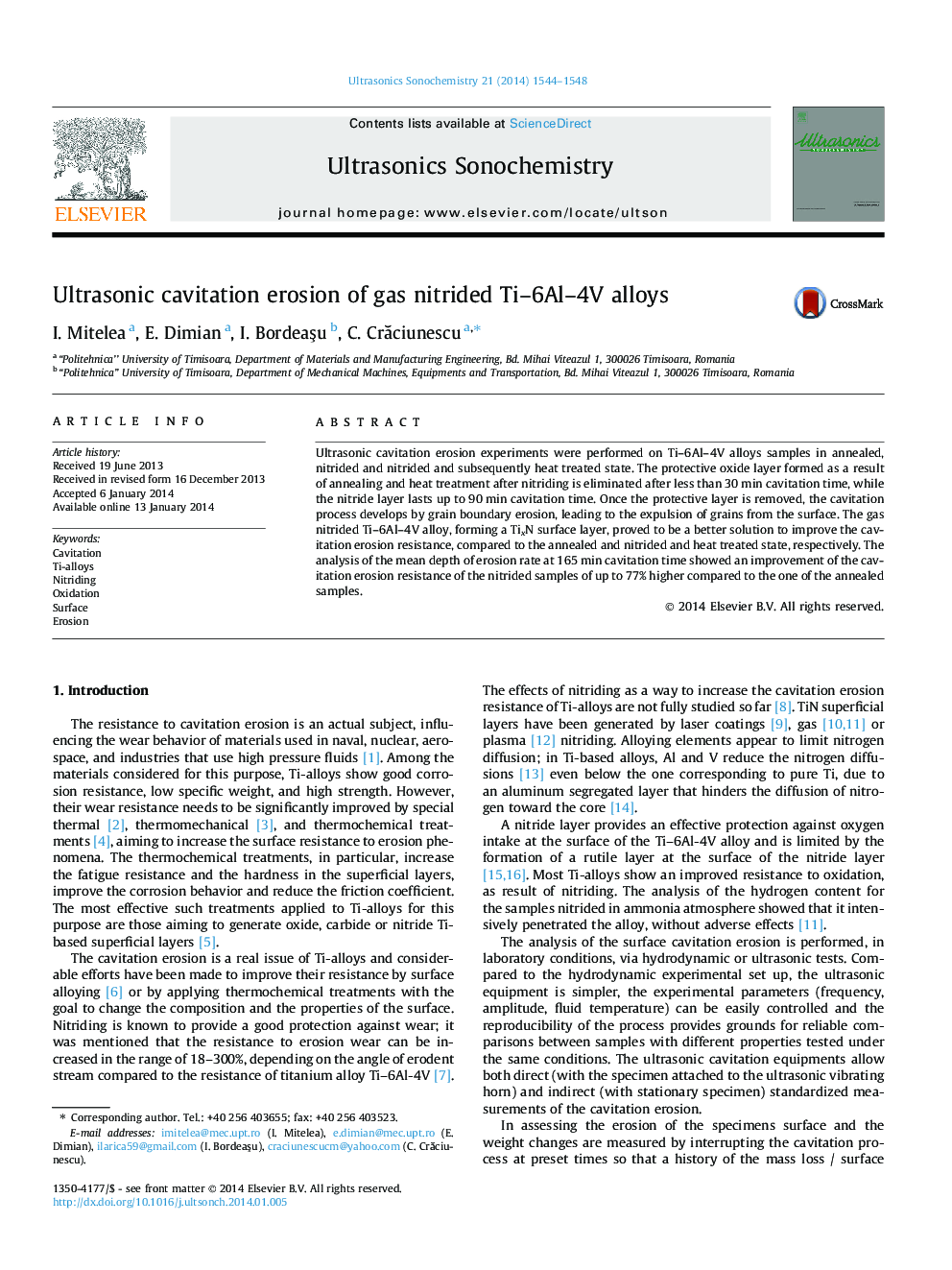| Article ID | Journal | Published Year | Pages | File Type |
|---|---|---|---|---|
| 1268990 | Ultrasonics Sonochemistry | 2014 | 5 Pages |
•Up to 77% cavitation erosion improvement of nitrided Ti–6Al–4V alloys.•Further annealing reduces the nitriding effect by 50%.•Nitriding leads to significant better results compared to oxidation.
Ultrasonic cavitation erosion experiments were performed on Ti–6Al–4V alloys samples in annealed, nitrided and nitrided and subsequently heat treated state. The protective oxide layer formed as a result of annealing and heat treatment after nitriding is eliminated after less than 30 min cavitation time, while the nitride layer lasts up to 90 min cavitation time. Once the protective layer is removed, the cavitation process develops by grain boundary erosion, leading to the expulsion of grains from the surface. The gas nitrided Ti–6Al–4V alloy, forming a TixN surface layer, proved to be a better solution to improve the cavitation erosion resistance, compared to the annealed and nitrided and heat treated state, respectively. The analysis of the mean depth of erosion rate at 165 min cavitation time showed an improvement of the cavitation erosion resistance of the nitrided samples of up to 77% higher compared to the one of the annealed samples.
